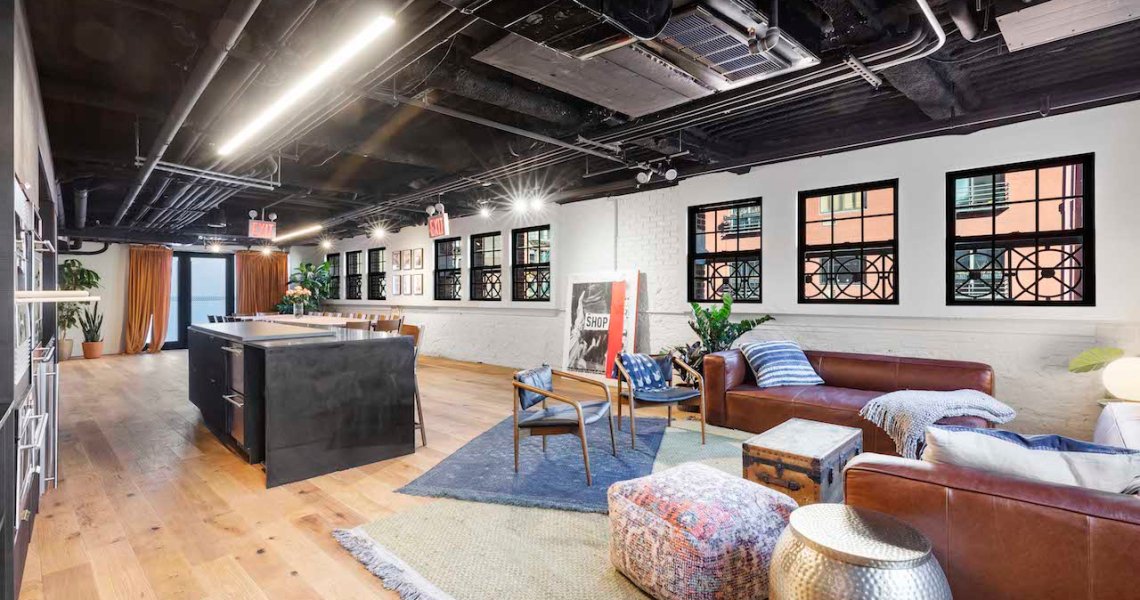Showfields, the experiential rotating retail space in New York City, opened on Tuesday its fourth floor, which had been under construction since the store’s opening in March. Rather than dedicate the fourth floor to more retail space, Showfields designed it to be a coworking space.
The 1,000-square-foot space, along with a 1,500-square-foot outdoor terrace, can hold up to 40 people, all of whom can work on site for free — there are no obvious upfront costs and no “fine print” costs like Wi-Fi , said Tal Zvi Nathanel, co-founder of Showfields. Instead, the value of the space will come from the utility it provides Showfield’s brand partners, which include DTC fashion brands like Saint James and Daniel Wellington along with installations from the CFDA.
“We believe the next phase of retail is consumer commerce, which has some well-defined principles,” said Nathanel. “One principle is community. How can we help enhance that sense of community for our brands? We need to provide them with the space to build their community and help grow it. It’s for brands to turn their followers and customers into a community.”
The crossover between retail and coworking spaces is novel, but not unprecedented. In the last year, WeWork notably began an ongoing partnership with Rent the Runway to bring the fashion company’s drop-off points into its working spaces. In addition, smaller retailers like Take Care have added their own working spaces, and retailers like Lululemon have “community spaces” where events and classes are held.
This is in line with the trend in retail to make stores into places where customers can take part in activities beyond just buying products. Brands are increasingly taking to this concept, since it presents them with a captive audience and a space to indulge in all the experiential, Instagrammable moments that have become de rigueur for retailers today. As consumers are inundated with a flood of options for where to buy things, it’s those ephemeral, in-store moments that keep them coming back.
“New York coworking spaces are a competitive market. People yearn to be in places like WeWork and The Wing because of their design, atmosphere and large network,” said Avery Faigen, a retail analyst at Edited. “A place like Showfields that offers a coworking space adds a different experiential element to the retail model. With the initial attraction of the free workspace commodity, Showfields entices people to also explore and shop in their retail store because of convenience.”
Nathanel said that the coworking space is not necessarily intended to get people to stay in the store longer or to make more purchases.
Ad position: web_incontent_pos1
“It might be great if it happens like that, but that’s not the intention behind what we do,” he said. “Our business model is driven by our partnership with brands. This space is to give utility to our brands and to our audience.Today, one of the pillars of retail is community. We just asked, ‘What would a retail space where community is a focus look like?’ And it looks like this.”




